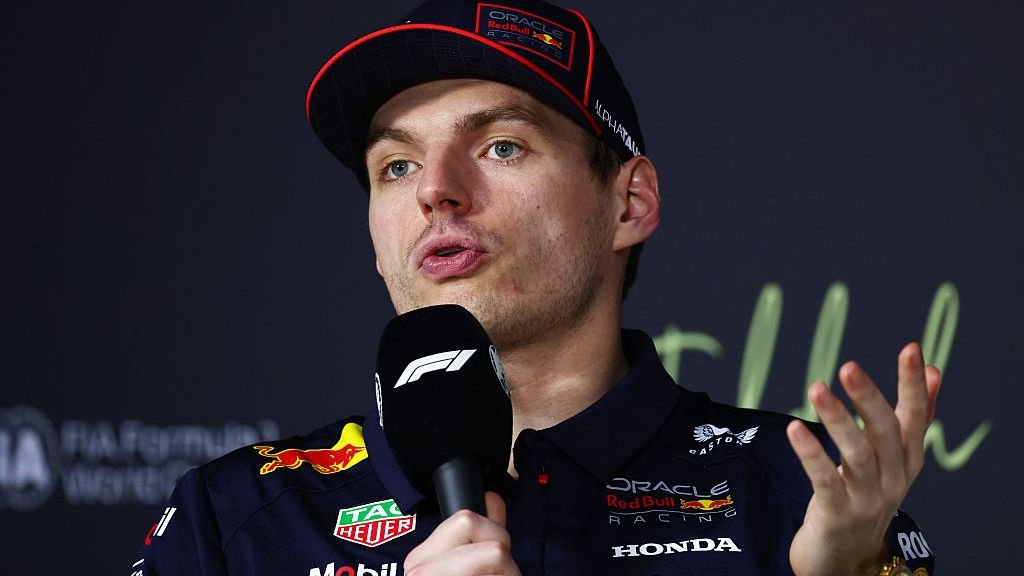Max Verstappen’s Controversial Race Incident: A Deep Dive into the Jeddah Grand Prix
In the world of Formula 1, moments of controversy often spark heated debates among fans and analysts alike. The recent Jeddah Grand Prix was no exception, particularly when it came to Max Verstappen’s racing tactics during the fifth race of the season. Although the incident in question did not involve reckless driving or a significant impact on other drivers’ results, it did shine a light on the nuances of racing rules and the interpretation of those rules by both drivers and officials.
The race began with Oscar Piastri, the McLaren driver, getting a remarkable start off the line, quickly pulling ahead of Verstappen, who had secured pole position. As they raced towards Turn 1, Verstappen attempted to close the door on Piastri, a classic maneuver in racing. However, the McLaren driver’s acceleration allowed him to position his car alongside Verstappen, making it impossible for the Red Bull driver to fully block him.
With Piastri in front, Verstappen’s next opportunity to regain his position came at the first corner. Yet, the advantage gained by Piastri during the initial phase of the race meant that Verstappen had to carry significantly more speed into the corner. As they approached the apex, Piastri nailed his braking point, expertly utilizing the track’s width. Verstappen, on the other hand, seemed to misjudge the corner, carrying too much speed and unable to fully take the turn.
The crux of the incident lay in Verstappen’s attempt to claim that he was ahead at the apex of Turn 1. According to the guidelines that govern driver behavior, if a driver can establish their car alongside another at the apex, they are entitled to space on the exit. In this scenario, the stewards evaluated the situation and concluded that Piastri had indeed established his front axle alongside Verstappen’s car before and at the apex of the corner. Their ruling stated that Piastri was entitled to a racing line, and as Verstappen left the track to maintain his position, he effectively gained an advantage that he did not relinquish.
As a result, Verstappen received a five-second time penalty. Despite his best efforts to increase his pace and minimize the penalty’s impact, he ultimately lost the lead to Piastri during the pit stop phase. The incident happened early in the race, leaving Verstappen plenty of time to reflect on the events as the race unfolded.
Upon finishing second, Verstappen emerged from his car with a composed demeanor, although it was clear he felt aggrieved by the ruling. He expressed gratitude to the fans in Jeddah, emphasizing his enjoyment of the track, while purposefully refraining from commenting on the incident: “I’m going to keep it quite short. I just want to say a big thank you to the fans here in Jeddah. It’s been a great weekend. I love the track and, yeah, the rest is what it is. I’m looking forward to Miami. So I’ll see you there.”
Even during the post-race press conference and subsequent interviews, Verstappen maintained his silence on the incident, stating, “Start happened, Turn 1 happened, and suddenly it was lap 50. It just all went super fast. The problem is that I cannot share my opinion about it because I might get penalized also, so it’s better not to speak about it.” His caution highlighted the ongoing tension between drivers and FIA regulations, particularly regarding public comments that could be construed as criticism.
Verstappen’s reluctance to discuss the incident was not just about avoiding penalties; it also reflected a broader concern about how his words might be interpreted, especially in the age of social media, where statements can easily be taken out of context. He pointed to the potential repercussions of being overly critical of the governing body, which has the power to impose penalties for comments deemed inappropriate.
Red Bull Racing, Verstappen’s team, also expressed its disapproval of the penalty. Team principal Christian Horner defended Verstappen’s actions, arguing that the ruling was excessively harsh. He even presented an image from Verstappen’s onboard camera to bolster his argument, suggesting that Verstappen was indeed ahead at the apex. However, the image also illustrated that Piastri’s front wheel was clearly ahead of Verstappen’s mirror, which bolstered the stewards’ decision.
Horner’s insistence that Verstappen did nothing wrong seemed to contradict the evidence presented. He noted that both drivers entered the corner at similar speeds, with Piastri making a deeper entry. This, he argued, should have allowed Verstappen to maintain his racing line. Yet, the rules stipulate that if Piastri had his front wheel alongside Verstappen’s mirror, he was entitled to the corner, a fact that seemed to weaken Horner’s defense.
The controversy surrounding this incident raises questions about Verstappen’s reputation and how it influences the perception of his driving. While some argue that he often faces additional scrutiny due to his aggressive style, others contend that he operates within the bounds of the rules. In this case, Verstappen’s attempt to leverage the regulations to his advantage was within the rules, but it ultimately did not succeed.
Despite the relatively minor nature of this infringement, the reaction to it highlights the ongoing challenges Verstappen faces in defending his title this season. The incident has sparked discussions about the need for clearer guidelines and more consistent enforcement of the rules, especially as the competition intensifies.
As the racing season progresses, the interplay between driver tactics, team strategies, and regulatory frameworks will continue to shape the narrative of each race. Verstappen’s ability to navigate these complexities while maintaining his competitive edge will be crucial as he aims to reclaim his spot at the top of the standings. The Jeddah Grand Prix incident serves as just one example of the intricate dance between drivers and the regulations that govern their sport, a dynamic that will undoubtedly play out in various forms throughout the season.
